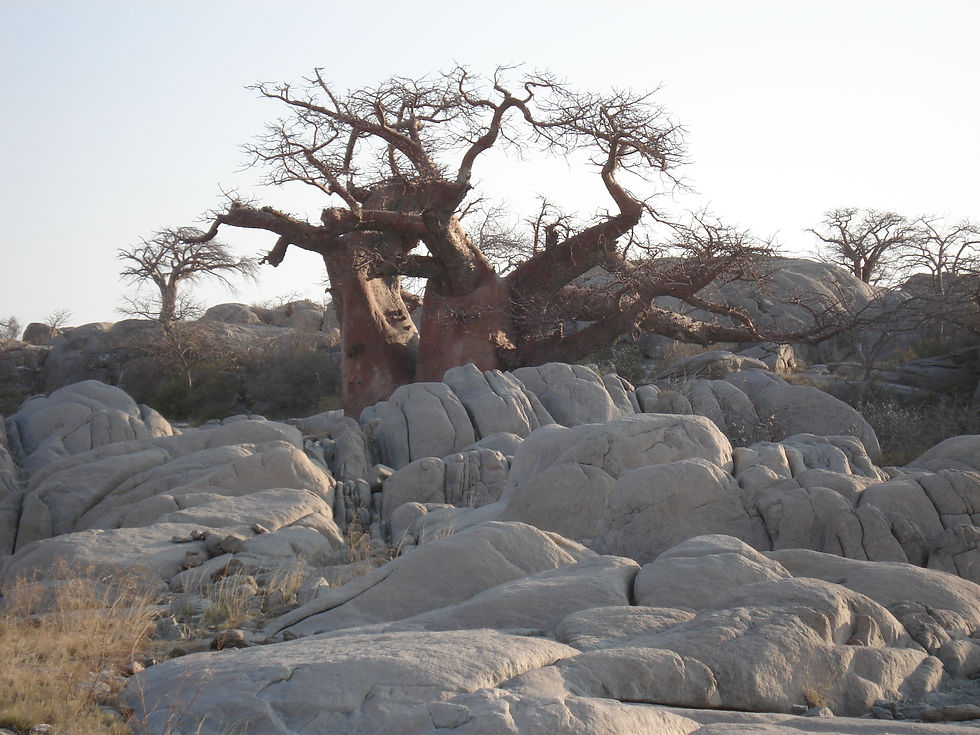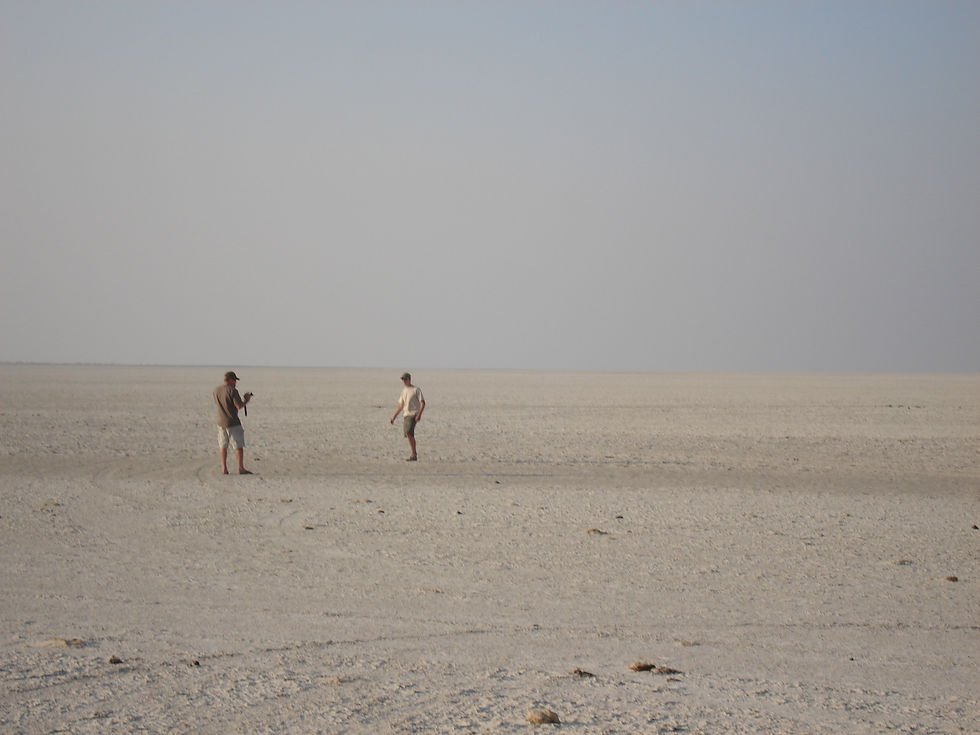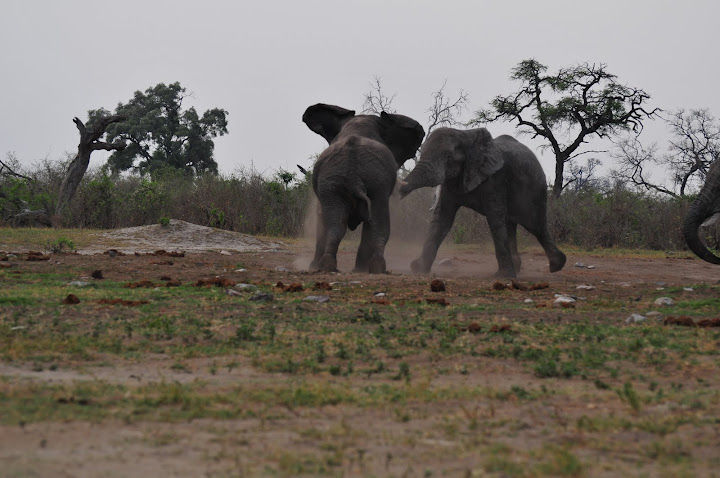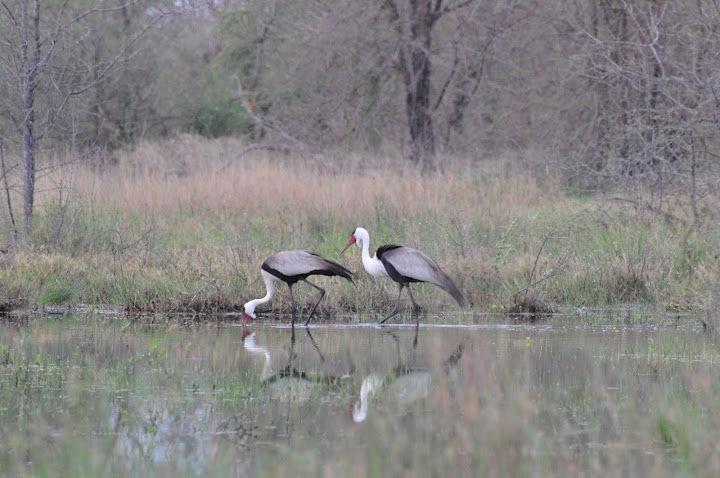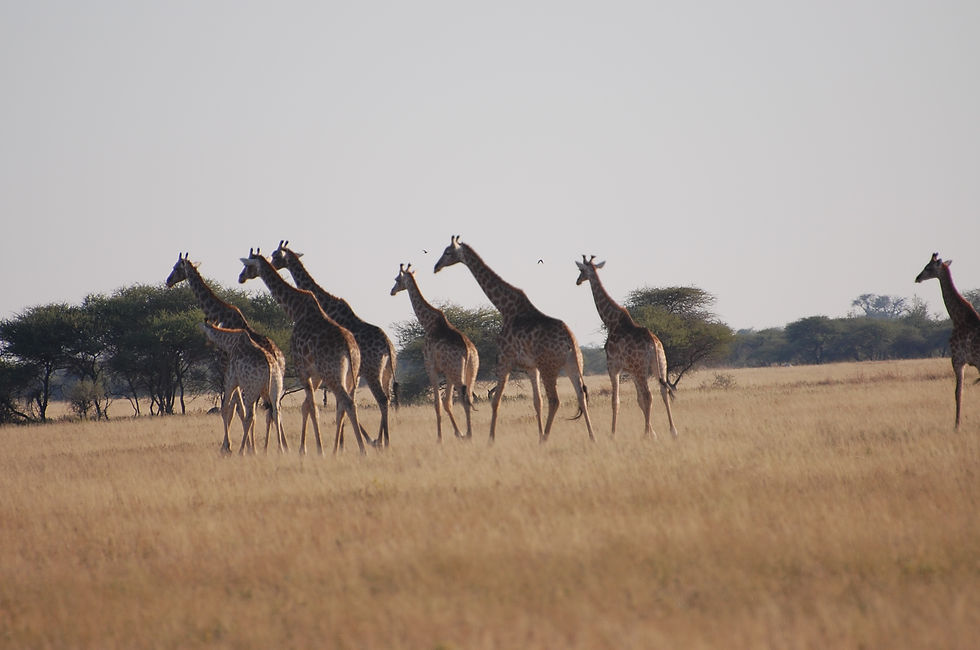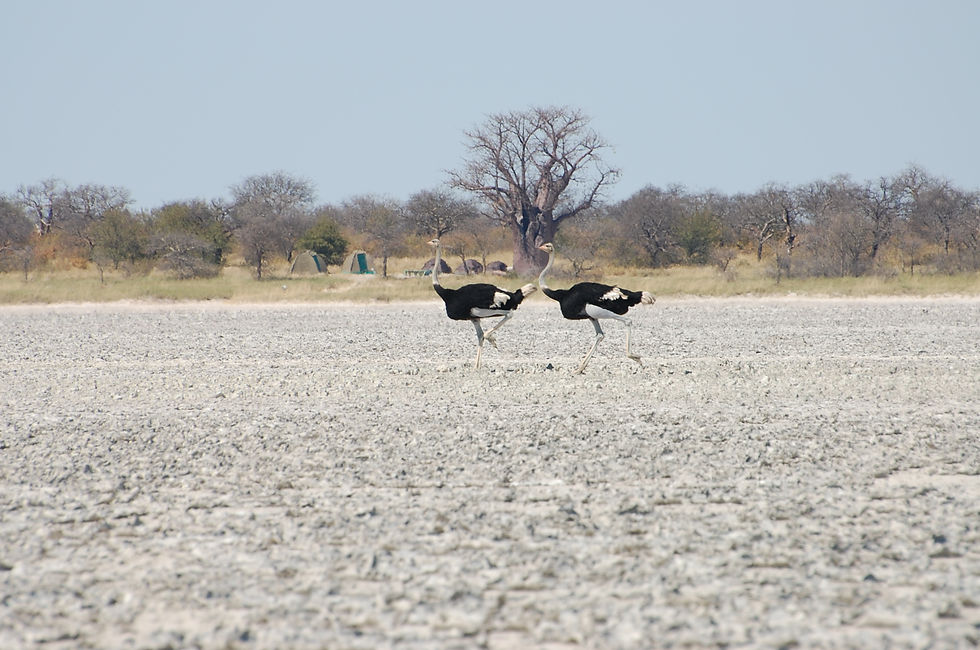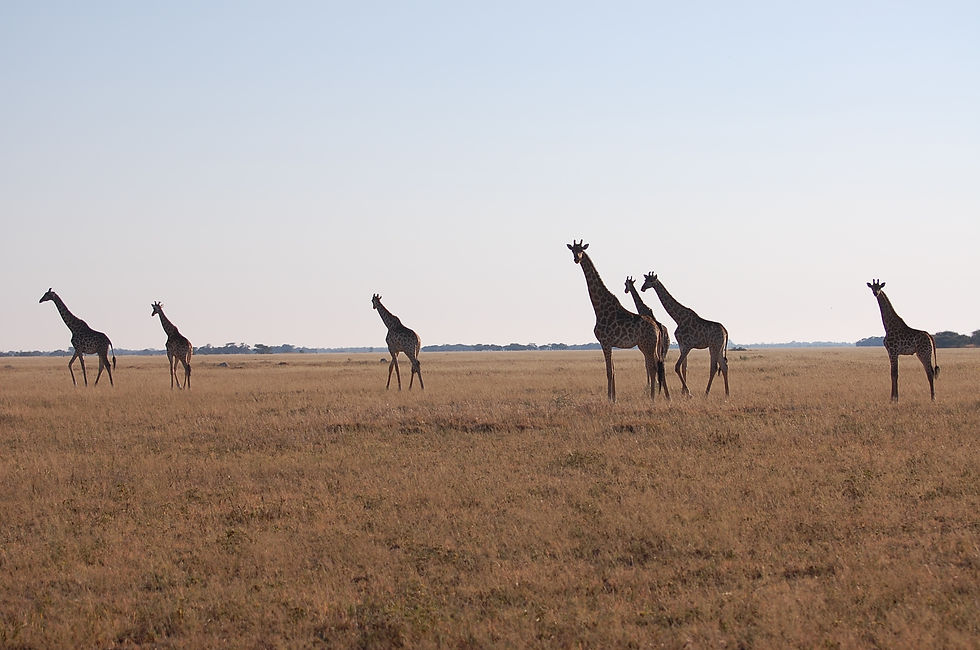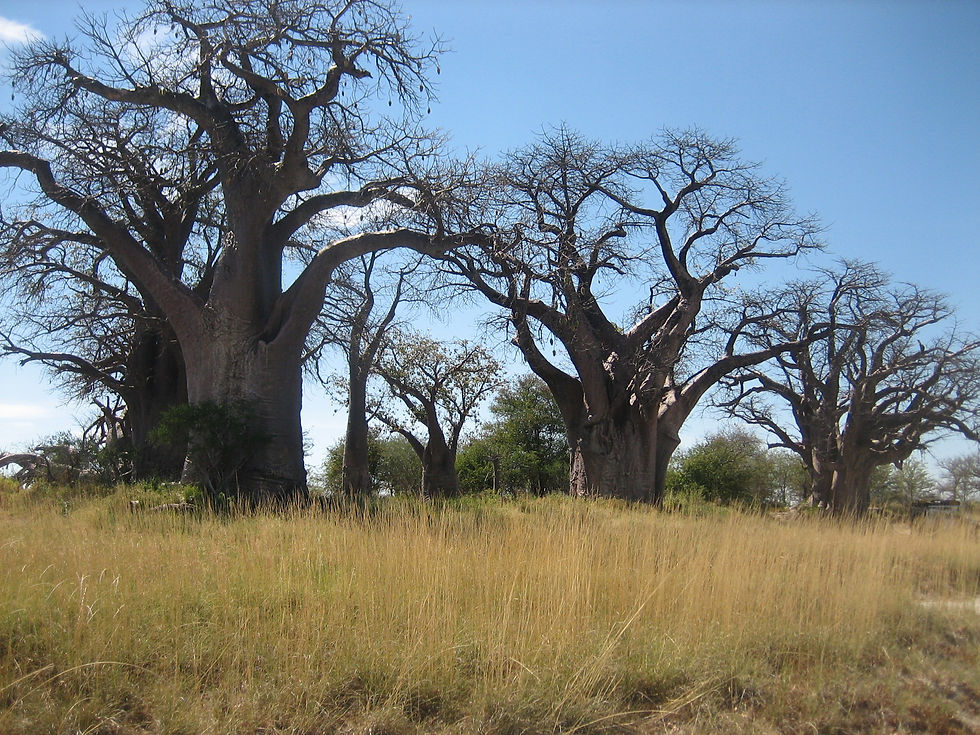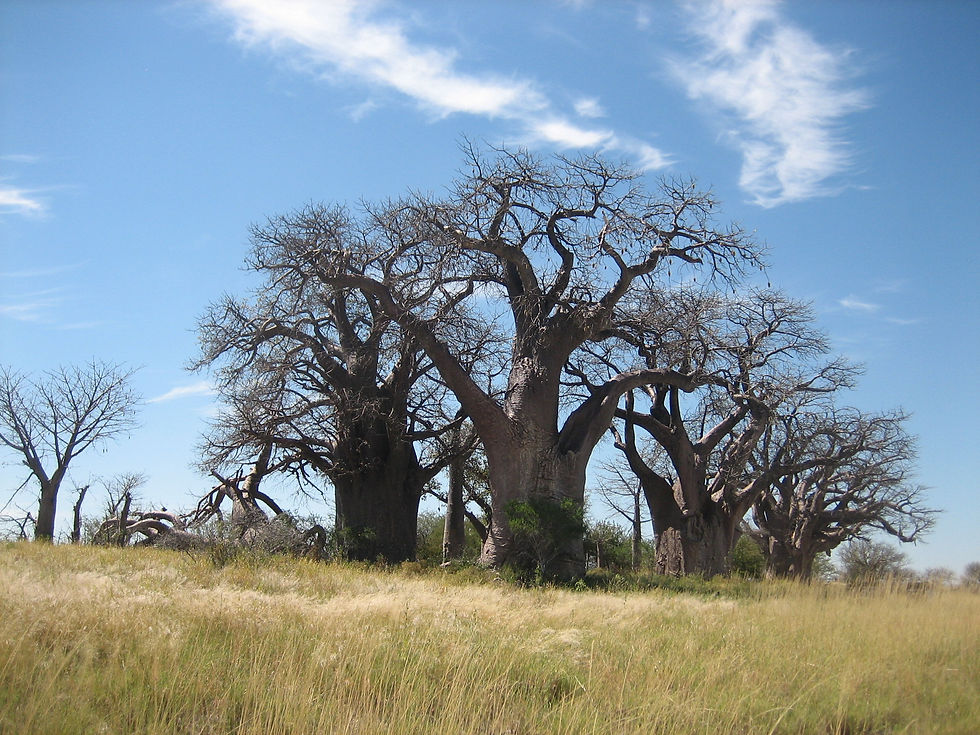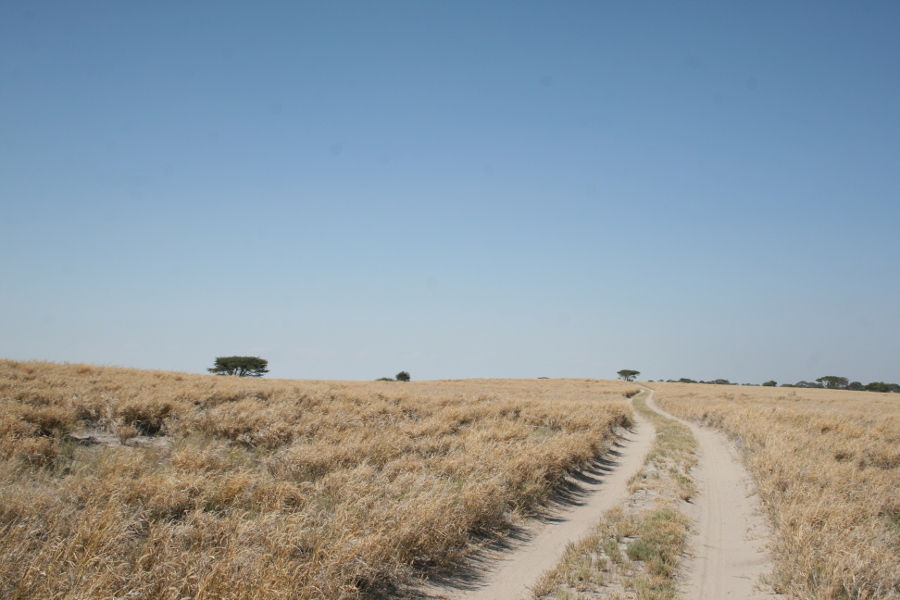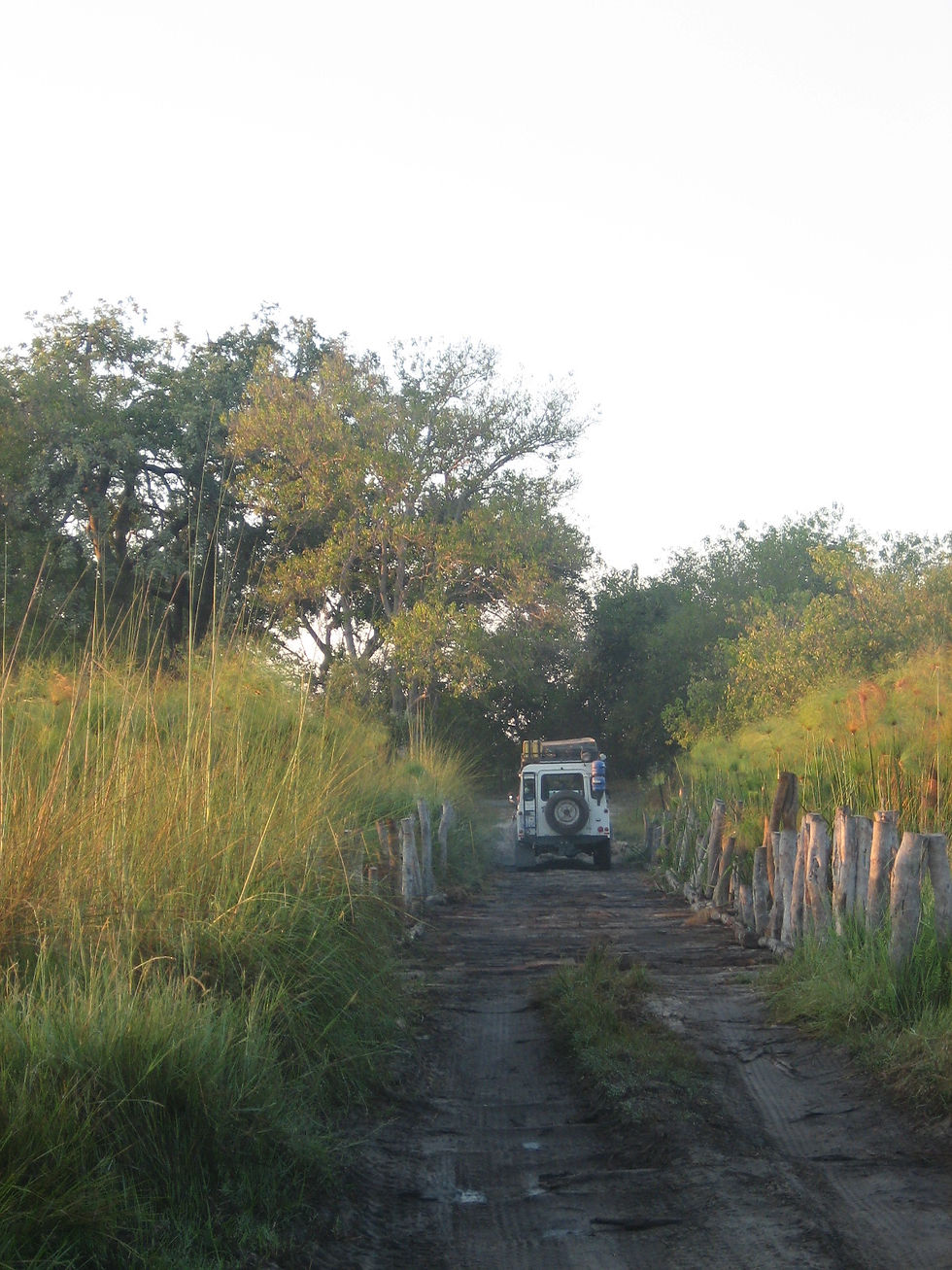
Sowa Pan
Sowa (or Sua) is the bushman word for salt, an apt decription of this vast white expanse. There are very few rock islands in Makgadikgadi, but in southern Sowa a scattering of granite isle lie on the white surface like beached whales. All have unique characteristics that give this desolate place its mesmeric attraction. Of all the islands, Kubu is the most famous.
The Makgadikgadi Pans
The Makgadikgadi Pans is a place of wide open, uninhabited spaces under a endless canopy of blue sky. The largest salt pan in the world, its silver-grey surface covers over 12,000 km of completely barren flatness, an area almost the size of Portugal. The vast complex bears testimony to the superlake that once covered much of nothern Botswana. Thousands of years ago the courses of the Chobe and Zambezi rivers were diverted from the lake and, as it shrank so the water's salinity increased. All that was left was the sun baked bed.
Baines Boabab
This remarkable cluster of trees, also known as the seven sisters, has been immortalized by photographers and painters over the years, including Prince Charles, but they were made famous by the painter and naturalist Thomas Baines who was the first to paint them during his expedition in 1862.

Kubu Island
Rising no more than 20m (70ft) above the pan, this national monument with its fossil beaches, stunted boabab trees and mysterious stone walls, leaves an endelible impression upon all who visit its water-worn shores. Many of Kubu's rocks are stained white with fossilized bird droppings.
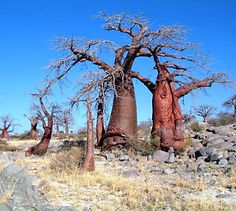
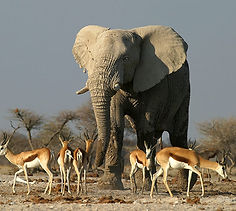
The Makgadikgadi and Nxai Pan National Park
This national park covers approximetly 7500km (2850sq miles), extending across both sides of the main Gweta/Maun road. The national park includes several large pans with a selection of camping sites, but one of the biggest attractions is the famous 'Baines' Baobabs'.
Nxai Pan
Unlike the salt pans which characterize the rest of the Makgadikgadi Nxai Pan is covered with short sweet grass which provides good grazing and attracts large herds of springbok and impala. Other game includes the desert-adapted gemsbok, giraffe, kudu, hatebeest, zebra and the migratory wildebeest as well as leopard, lion and hyena.

